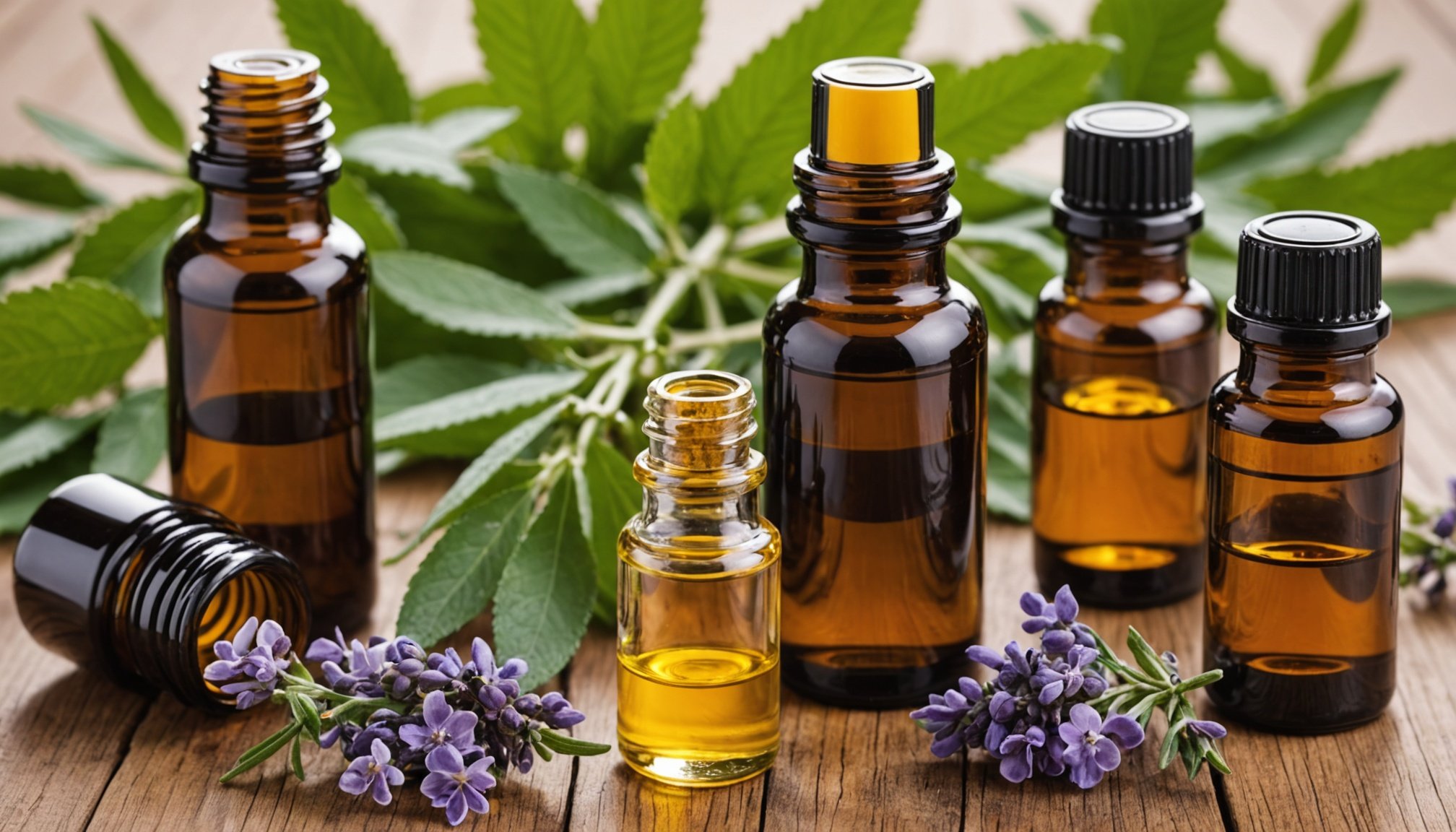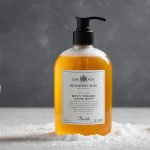Overview of Essential Oils for Scars
Essential oils have gained popularity as a natural remedy for scar reduction, offering a holistic approach to skin healing. The appeal of essential oils lies in their ability to promote healing and rejuvenate skin when conventional treatments might not be desired. Essential oils such as lavender, tea tree, and rosehip oil contain compounds that help improve skin elasticity and reduce inflammation, vital for scar treatment.
When using essential oils for scar treatment, it’s important to appreciate how they function. These oils penetrate the skin and aid in tissue regeneration, encouraging the skin to repair itself naturally. They also provide a soothing sensation, which can reduce discomfort associated with scar tissue.
Also to discover : Elevate your look: the ultimate guide to effortless minimalist makeup for everyday beauty
Choosing the right essential oil is crucial. Selecting high-quality essential oils ensures potency and effectiveness, as diluted or synthetic variations may not offer the same benefits. Look for oils labeled as 100% pure and check for certifications that guarantee authenticity.
Incorporating essential oils into your skincare routine can be both therapeutic and effective. Their natural properties offer a gentle yet powerful means to care for your skin, making them a valuable option for those seeking natural remedies for scars.
Also read : Your ultimate guide to choosing the ideal fragrance for any event: unleash the power of perfume
Top Essential Oils for Reducing Scars
Delving into scar treatment through essential oils opens a world of natural healing. Each oil brings unique healing properties that can enhance skin appearance and texture.
Lavender Oil
Lavender oil is renowned for its calming effects and ability to aid skin regeneration. This essential oil helps reduce redness, itching, and scar tissue thanks to its soothing properties. Applying lavender oil routinely can assist in fostering healthy new skin, making it an excellent choice for those seeking natural scar solutions.
Tea Tree Oil
Tea tree oil excels due to its remarkable antibacterial qualities. It plays a vital role in healing wounds and preventing scar formation by keeping infections at bay. This essential oil’s ability to combat bacteria makes it a potent addition to any scar treatment regimen.
Frankincense Oil
A favorite for its therapeutic properties, frankincense oil stands out with its impressive anti-inflammatory benefits. It supports cellular regeneration and effectively reduces scars by encouraging skin cells’ renewal. This oil not only aids in diminishing existing scars but also prevents new ones from forming, making it a compelling option for enhancing the skin’s healing process.
Application Methods for Essential Oils
Using essential oils in your skincare routine can be transformative, but understanding how to apply them safely is crucial. Various methods exist for using these oils on scars, but one must ensure proper dilution to prevent adverse reactions.
Dilution Ratios and Carrier Oils
When using essential oils, start by diluting them with carrier oils to ensure safety for the skin. A common dilution ratio is 2-3 drops of essential oil per tablespoon of carrier oil, such as coconut or jojoba oil. This not only reduces the potency for skin safety but also enhances absorption.
Different Application Methods
Essential oils can be applied in several ways:
-
Direct Application: Gently massage the diluted oil onto scars daily using circular motions.
-
Compress: Soak a clean cloth in warm water and add a few drops of the diluted oil, then apply to the scar.
-
Bath: Add a few drops of diluted essential oil to a warm bath for a relaxing skin treatment.
Daily Skincare Routine Integration
Incorporating essential oils into a daily routine can be straightforward. Use the oils after cleansing and before moisturizing. This allows the oils to penetrate deeply, promoting healing and rejuvenation. Remember to patch-test any new application method to monitor skin reactions.
Scientific Backing for Essential Oils and Scar Reduction
Delving into the evidence-based benefits of essential oils for scar reduction reveals fascinating intersections between ancient practices and modern science. Present-day clinical studies demonstrate varying degrees of efficacy for certain essential oils in scar treatment.
Review of Current Research
Recent research underscores essential oils like lavender and tea tree oil’s potential in influencing scar appearance. Studies typically employ rigorous methodologies, examining outcomes such as scar shrinkage and color alteration over significant periods. The precision of results often hinges on controlling variables such as oil concentration and application timing.
Expert Opinions
Dermatologists and skin care professionals frequently weigh in on the viability of essential oils within scar treatment regimes. Experts generally urge caution, recommending essential oils as complementary rather than standalone solutions, due to variances in skin types and individual responses. Most professionals advocate continued cautious integration of oils backed by substantial clinical evidence.
Evidence-Based Benefits
Some studies highlight that essential oils, when used routinely, may contribute to the smoothening and softening of scars over time. Results vary widely, and clear, uniform conclusions remain elusive. Yet, the therapeutic properties such as anti-inflammatory and antimicrobial effects present in certain oils align with some dermatological practices for enhancing skin repair and reducing scar prominence.
User Testimonials
Experiencing the use of essential oils for scars through the eyes of real-life users provides valuable insight. Many individuals have shared their customer experiences, highlighting both positive outcomes and challenges. One frequent theme in reviews emphasizes the effectiveness of essential oils in reducing scar appearance. Users often note significant improvements in skin texture and even in skin tone over continuous use.
However, it’s crucial to recognize that results can vary based on individual skin types. Testimonials reveal that some individuals with oilier skin found certain oils too greasy, leading to breakouts. Conversely, those with dry skin reported better absorption and improved moisture retention.
Here’s what some users shared about their experiences:
- Positive outcomes: Many users experienced noticeable scar fading and smoother skin.
- Challenges faced: Adjustments were often needed to find the right oil blend for specific skin types.
- Common themes: Patience and consistency were key to obtaining desired results.
These testimonials underscore that while essential oils can be effective, their impact can vary significantly. Thus, understanding one’s own skin type and needs becomes essential for achieving the best results.
Potential Side Effects and Precautions
It is important to be aware of the side effects and precautions associated with essential oils. Understanding these can help ensure safe usage and prevent unwanted reactions.
Common Allergies and Reactions
Many individuals may be prone to allergic reactions when using essential oils. Reactions can include skin irritation, rash, and, in some cases, respiratory issues. The most common allergens are found in oils like lavender, mint, and citrus. Conducting a patch test before using a new oil can help in identifying potential allergic reactions. Apply a small amount of the diluted oil to a small area of the skin and wait for 24 hours to see if any reaction occurs.
Safe Usage Guidelines
For safe usage, always dilute essential oils with carrier oils before applying them to the skin. Follow recommended dosage levels and avoid ingestion unless specifically advised by a professional. Never apply oils on damaged or sensitive skin.
When to Consult a Professional
It is advisable to consult with a dermatologist or healthcare professional before using essential oils, especially if you have existing medical conditions or experience persistent reactions. They can guide you in identifying potential irritants and suggest alternative remedies for your needs, thus ensuring your safety while using essential oils.
Tips for Combining Essential Oils
Enhancing the effectiveness of essential oils often requires careful blending. Creating a synergistic combination can significantly boost their efficacy, especially in treatments like scar reduction. But how do you decide which oils to blend?
Recommendations for Effective Oil Combinations
To target scar treatment, consider blending oils known for skin-regeneration properties. Lavender and rosehip oil are renowned for their healing prowess. When these oils are combined, their synergy can drastically enhance scar healing, thanks to their complementary properties. Lavender soothes and reduces inflammation, while rosehip oil promotes tissue regeneration.
Benefits of Synergy in Essential Oil Formulations
Synergy in essential oil formulations is crucial. This concept entails that the combination of oils produces a greater effect than they would individually. For instance, when orange and frankincense oils are mixed, they not only offer anti-inflammatory benefits but also work together to brighten and even out skin tone, enhancing overall skin health.
Creating a Personalized Blend for Optimal Results
Start by researching individual oils’ benefits, then experiment with small batches to find your preferred blend. Adjust ratios based on your skin’s response to achieve an optimal blend aimed at specific goals, such as scar minimization. This personalized approach allows for tailored treatment, maximizing each oil’s enhanced effectiveness.











